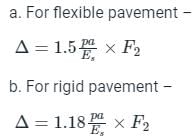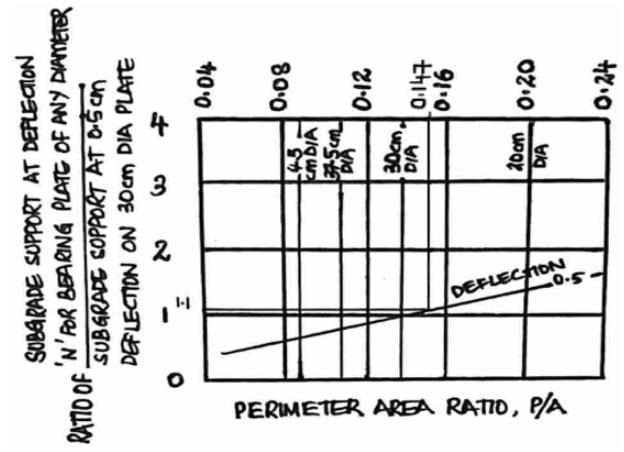Test: McLeod and Burmister Method - Civil Engineering (CE) MCQ
10 Questions MCQ Test - Test: McLeod and Burmister Method
McLeod method is based on the test results of ______ test.
Burmister considered the pavement structure as a homogeneous half space.
What is the equation for the thickness of pavement using McLeod method of design?
What is the deflection at the surface of a flexible pavement due to a wheel load of 40 kN and a tyre pressure of 0.5 MPa? The value of E for pavement and subgrade is 20 MPa.
The surface layer is considered to be ______ in the vertical direction.
The design subgrade support can be obtained by ______ the ratio and the ______
Find the thickness of the pavement using McLeod method for the soil subgrade having following details:
Wheel load, P = 4100 kg
Tyre pressure, p = 5 kg/cm2
Total subgrade support, S = 1810 kg
Base course constant, K = 85
Find the thickness of the pavement using McLeod method for the soil subgrade having following details:
Wheel load, P = 4100 kg
Tyre pressure, p = 6.5 kg/cm2
Total subgrade support, S = 2050 kg
Base course constant, K = 80
What will be the subgrade support for a wheel load of 4100 kg and tyre pressure of 7 kg/cm2 if the subgrade soil is subjected to plate load bearing test using 30 cm diameter plate and it yielded a pressure of 2.5 kg/cm2 after ten repetitions of load at 0.5 cm deflection?
What is the deflection factor for a single layer in Burmister’s equation?





 The equation uses the base course constant, the wheel load and the subgrade support.
The equation uses the base course constant, the wheel load and the subgrade support.






















